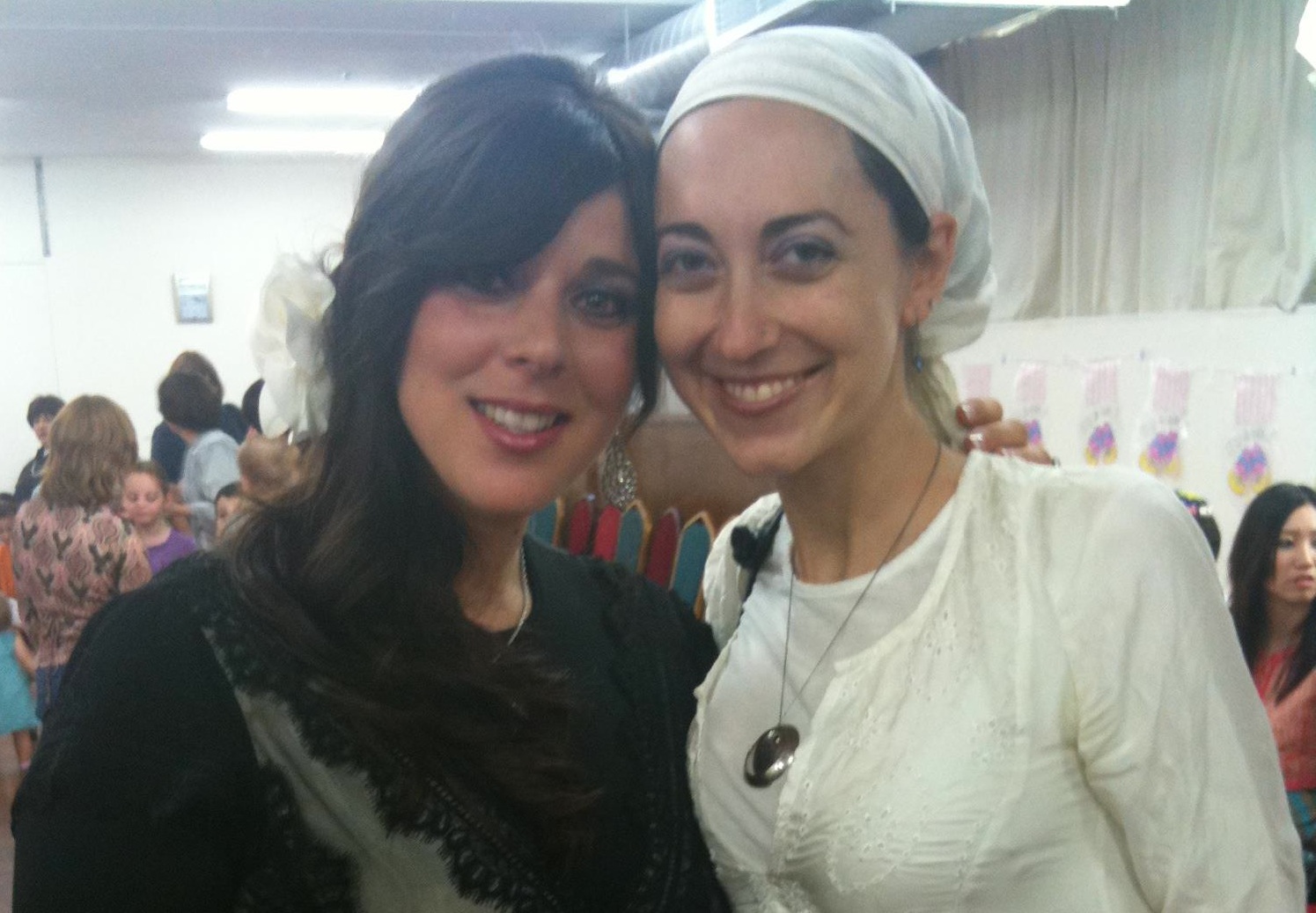Rebbetzin Riva Sperling on Why Women Cover Their Hair
I went tonight to a shiur by Rebbetzin Riva Sperling, who is visiting Sydney from Yerushalayim. She spoke on the topic of why women cover their hair. Here is a summary of the sources.
Does a Jewish woman have to cover her hair? Is it halacha? YES.
Torah – Bamidbar Chapter 5:
Describes the ordeal of the sotah, or the woman suspected of being unfaithful to her husband. ”The kohen (priest) shall stand the woman before G-d and uncover her hair.” The whole lead-up to her actually drinking the bitter waters is supposed to be more and more embarrassing, to get her to confess her misdeed. Therefore, we can infer two things from this: first, that married Jewish women cover their hair and second, that it is embarrassing to have it uncovered.
With what does a Jewish woman have to cover her hair?
Gamara – Ketubot 72a:
The Mishnah described Dat Yehudit as including a woman going out with her hair uncovered. This means there is a minhag of women covering their hair that has taken on the force of law across all of Judaism.
The Talmud points out, via Rabbit Yishmael, that from the Torah’s perspective even a basket suffices as a head covering, but for Dat Yehudit this is insufficient. (A “basket” could be translated as a sort of straw head-covering, a head covering of coarse cloth, or a scarf with holes in it, depending on who’s doing the translating.)
The Shiltei Giborim on Rif:
The Torah forbids a woman to go out without a basket on her head.
Rambam, Issurei Biah 21:17:
“Jewish women should not go bareheaded in the marketplace.”
Where does a Jewish woman have to cover her hair?
Gemara – Ketubot 72b:
R. Zerah points out that a woman has to cover her hair with something more than a basket when she goes to the marketplace, but in her own courtyard if she’s required even to cover her hair with a basket, it is too stringent and many Jewish women will be divorced.
Tosafot:
Say that even without a basket (the minimal head covering) a woman doesn’t violate the prohibition as long as she is in her how courtyard. (This is true even if other people can look into the courtyard!)
Gemara – Yoma 47a:
There was a woman named Kimchit whose 7 sons were all Kohen Gadol (high priest). When the sages asked her how she merited this, she told them it was because even the walls of her house had never seen the hairs of her head. The sages responded that many women had done this without getting such reward.
Darkei Moshe, Even ha-Ezer 115, letter 4:
Going without a head-covering is only forbidden in the marketplace, but it is modest for a woman not to show her hair, even at home.
Bayyit Hadash (Bah):
Takes the more strict view that leaving the hair uncovered is forbidden, even if the woman is in her own courtyard. Even the men of her household (her husband and children) shouldn’t see her without a hair covering.
Responsa Hattam Sofer, Orah Hayyim 36:
A woman has to wear at least a scarf, even in her own room. If she goes into the marketplace, she must also wear a hat. (Keep in mind that the Hattam Sofer was working against the Reform movement. The Reform movement went to the opposite extreme, in allowing that women never needed to cover their hair, so the Hattam Sofer responded with an extremely stringent opinion.)
Responsa Igrot Moshe, Even ha-Ezer, Vol. 1, 58:
Rav Moshe Feinstein points out that the Bah had required hair coverings in the courtyard, but the Hattam Sofer requires coverings even in the woman’s own room. He notes that all other authorities take the lenient view of the Bah. Although it is admirable to follow the example of Kimchit, women who do uncover their hair in their own space are not in violation of Dat Yehudit.
How much hair does a Jewish women have to cover?
Magen Avraham, Orah Hayyim 75:2:
According to the Zohar, every last strand of hair should be covered.
Responsa Maharam Alshakar 35:
Some women leave “the hair outside their tresses” (some strands of hair to the sides) exposed for looks. This hair is not normally covered, so it’s not considere to be an erotic stimulus. As far as the Zohar is concerned, it applies only to hair that is normally covered. Otherwise, women would even have to cover their eyebrows! He also points out that “in many things our sages were lenient so that women would remain attractive to their husbands.”
Responsa Hattam Sofer, Orah Hayyim 36:
The Zohar supplants the Talmud, so that exposing any hair outside the tresses is forbidden.
Responsa Igrot Moshe, Even ha-Ezer, Vol. 1, 58:
The actually Talmudic prohibition is against Jewish women going out with their hair unkempt, so if only a few strands are visible one cannot infer that all the hair is unkempt. Therefore, these strands are not a problem. There is an amount called a tefah, which is about 8-10 cm, or half the width of the head. You are permitted to show just under 1 square tefah of hair. (Usually a good rule is 2 finger widths.)

Women have many ways to cover their hair. In this photo my friend wears a wig, or sheitel, while I wear a scarf, or tichel.
We then had a nice discussion about some other issues, such as women who shave their heads. Some hassidic women do this after marriage so they never risk showing their hair. They wear a head covering at all times and wear fancy wigs just for their husbands. However, this practice has been discouraged by modern poskim, unless you are a member of one of these sects.
One of the reasons hair is covered, aside from because G-d said so, is that it is considered to be one of the most sensual parts of a woman and one of the most sexually attractive parts. A married woman does not need to show this to men other than her husband. Also, a head-covering can indicate to other men that she is married. Also, like tzitzit for a man, a woman’s head-covering reminds her of Hashem’s presence… and even more than that, reminds her that she is married.
We also talked about the mystical significance of hair, which some say represents creativity and the creative force. Men are conduits and bring that creative force down from shemayim (heaven) but women need to contain and refine it. Therefore, a woman covers her hair to contain and control her creative forces, allowing her to take her husband’s creative forces and shape them into something more useful.
It was a great discussion and it was nice to learn all of the sources!
Read More
 I can’t help but want to dedicate this week’s parsha post to my son, Akiva. Just try saying the names together… Eikev… Akiva. Notice the similarity? It’s no coincidence: they’re from the same root word. Add a yud in front and you even have the name Yaakov. And what do they mean? All three relate to the heel, as in the heel of the foot.
I can’t help but want to dedicate this week’s parsha post to my son, Akiva. Just try saying the names together… Eikev… Akiva. Notice the similarity? It’s no coincidence: they’re from the same root word. Add a yud in front and you even have the name Yaakov. And what do they mean? All three relate to the heel, as in the heel of the foot.





